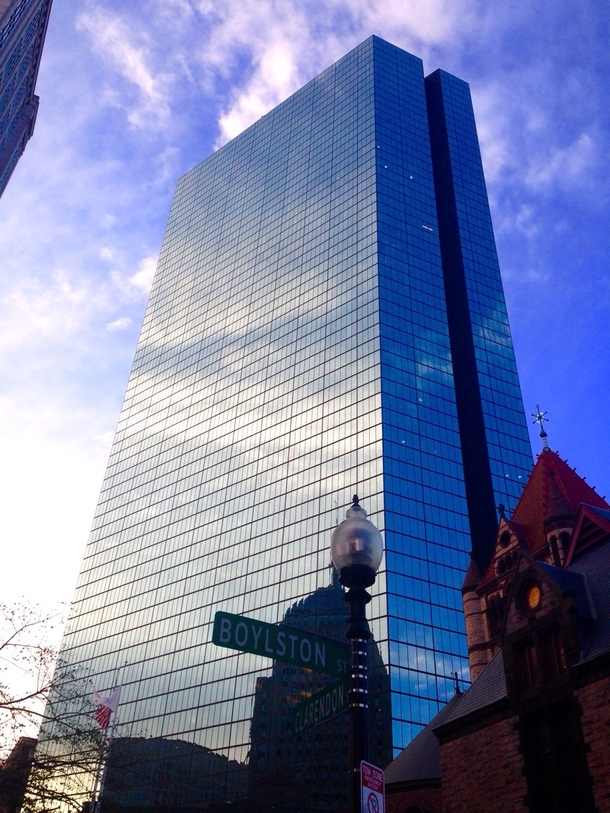

Instead of 1.5 million sf, the new specs required 2 million and instead of distributing the office space over the entire 2 block site, Hancock decided to keep their original Berkeley building and only build on ½ the original acreage. Armed with his analysis, Hancock decided to revise the building specifications, calling for greater square footage over a smaller footprint. In 1967, Hancock hired Max Philippson to consult on real estate planning and building costs. Also planned was a below-grade parking lot for 800 vehicles.

The design included two low-rise buildings flanking the tower, leaving a triangular plaza facing Trinity Church. His design called for a cylindrical masonry shaft with a portion sliced away, leaving a flat surface faced in glass, which would be separated from the cylinder by narrow vertical slots. (The Prudential had been built in 1964 as the tallest building in Boston.)ĭesign brief: Pei’s original designs (1966) included demolishing Hancock’s earlier Berkeley building (across the street) and creating 1.5 million sf of office space on 4 acres. Nothing was documented, but there was an implicit understanding that the tower would surpass that of their rival insurance company, the Prudential, in height. Pei to design a new building for their company in Copley Square. (under the leadership of chairman, Robert Slater) commissioned the firm of I.M. Commission brief: In 1965, the John Hancock Mutual Insurance Co.


 0 kommentar(er)
0 kommentar(er)
